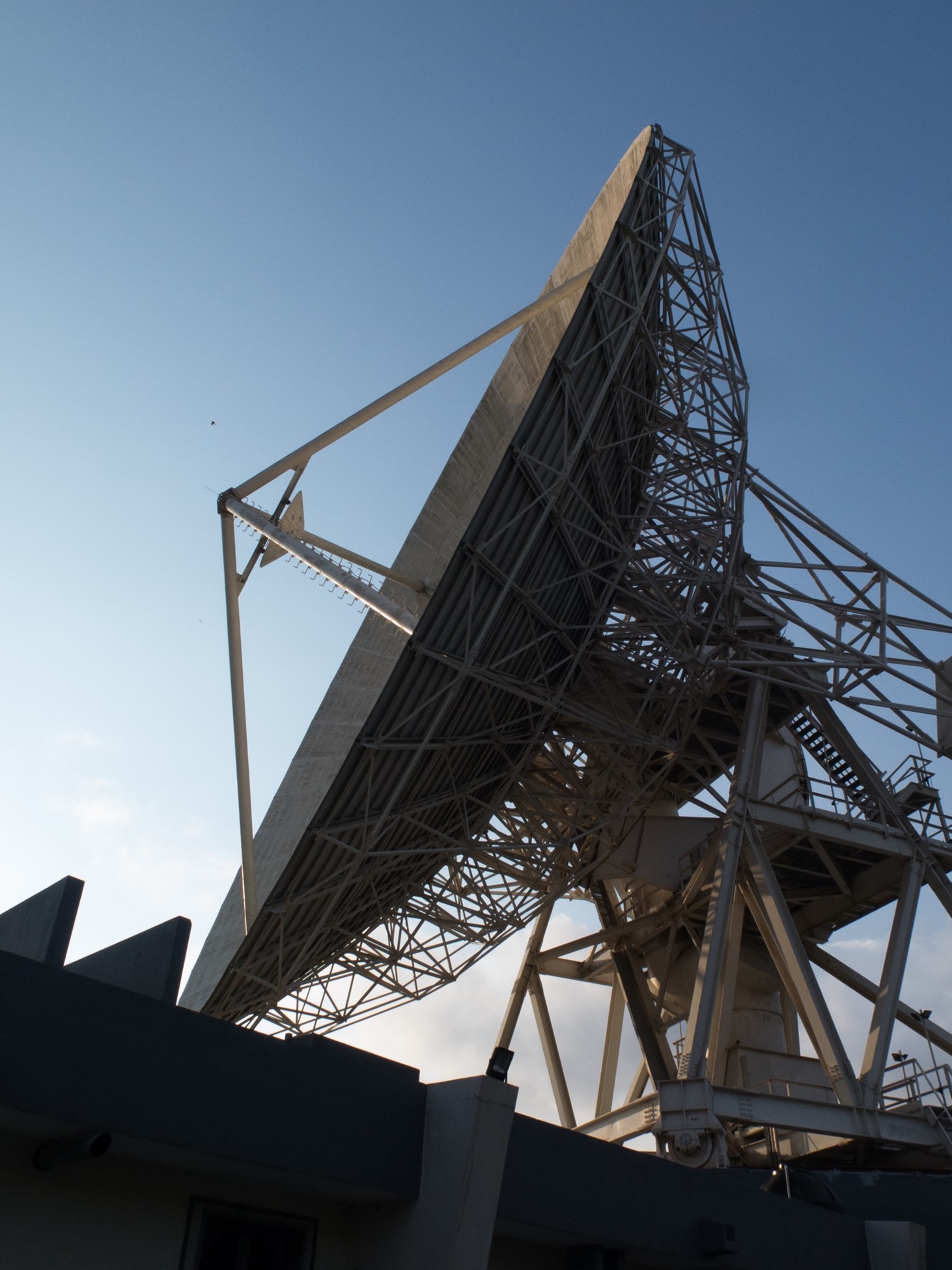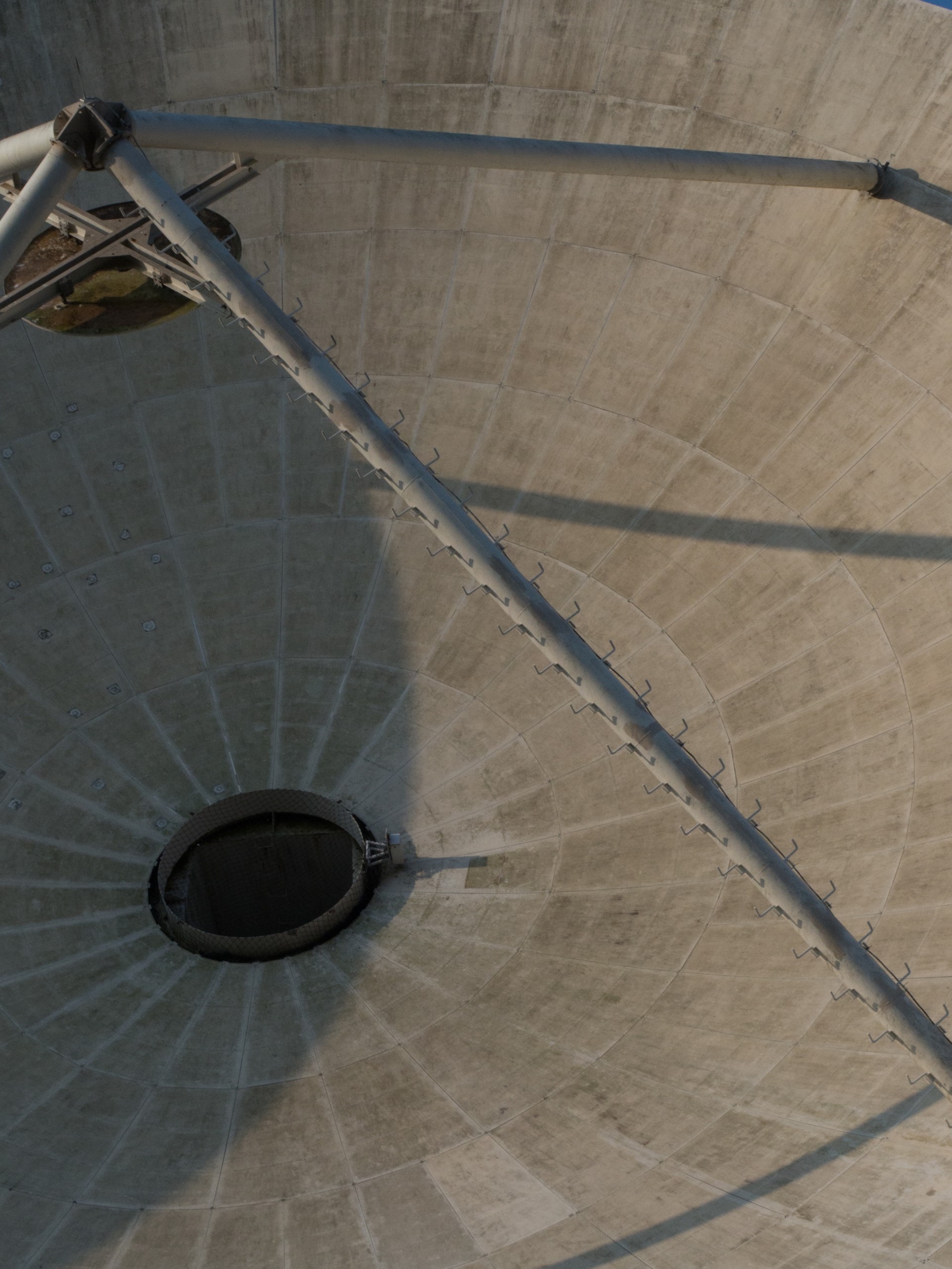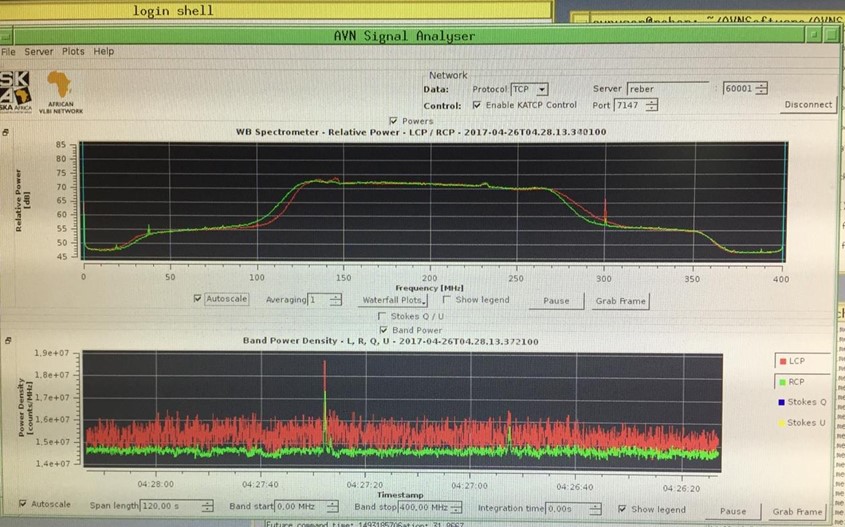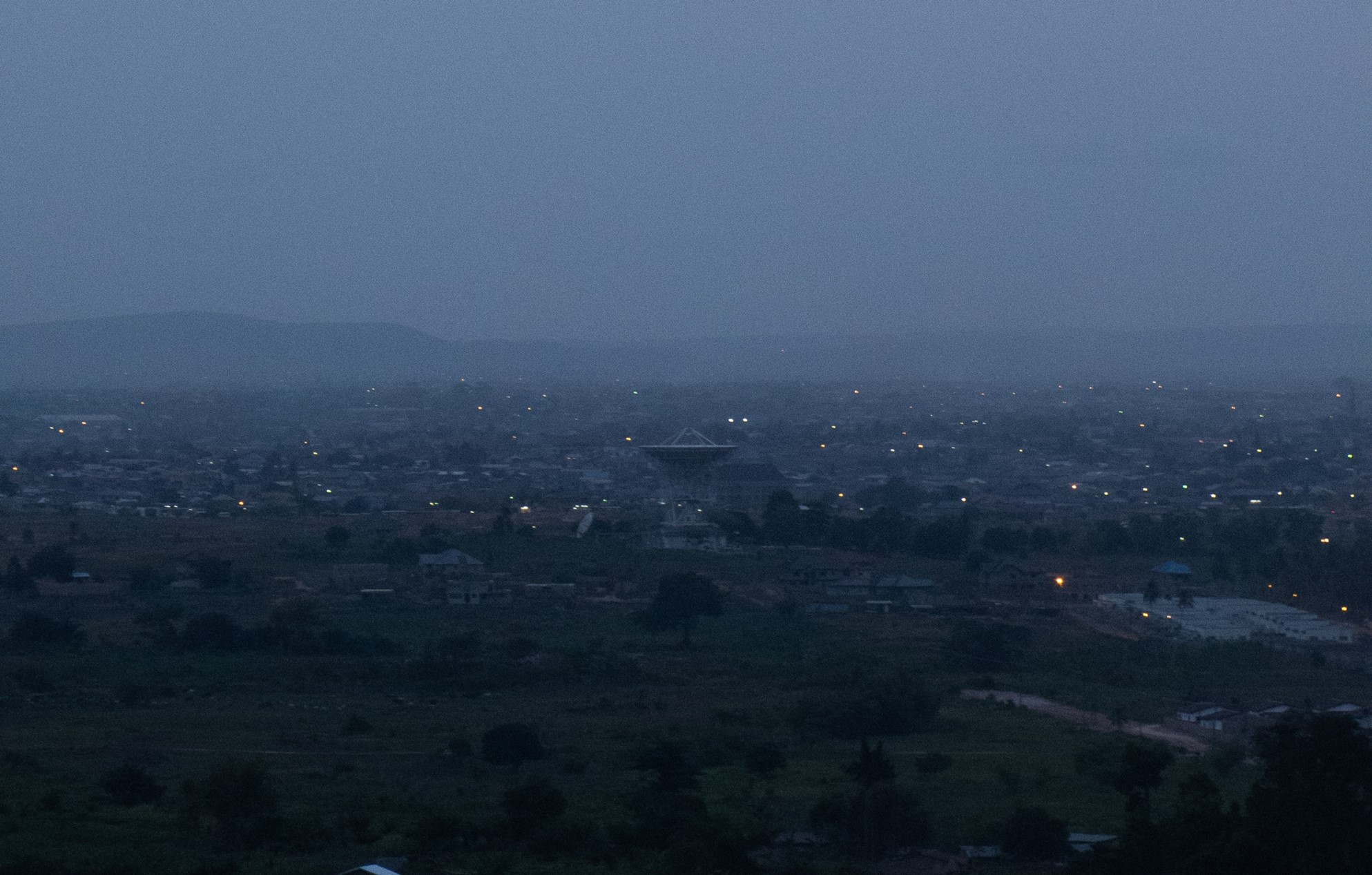Interference
James Merron11/20/2023 | Reflections
Early one morning, Dr. Bernard Asabere and I stood underneath the Ghana Radio Astronomy Observatory (GRAO) just outside of Accra. Our job was to prevent the cables connecting the dish to the control room from getting tangled while the telescope turned on its axis. The sub-reflector hovering above our heads was directing radio waves down through a dark hole in the middle of the 32-meter dish. As the signal passed through the waveguides and into the receiver system, Bernard received four static hisses on his walkie talkie signalling us to come back down. When we arrived in the control room there was a commotion: “The data has been polluted!” Confused about whether the noise was coming from the walkie-talkies or perhaps our mobile phones, the astronomers worked together to identify the source of interference.
A series of lines on a computer screen indexed an object nearby operating at the same frequencies (between 5 and 7GHz). The source of interference seen in the data was a telecommunications tower located on a nearby hill. No solutions have been developed to deal with the signal-disrupting source, but Bernard is engaged in a sort of ‘boundary work’ that assumes a privileged position of scientific activity in contrast to the mechanical operations of the telecommunications tower (Gieryn 1983: 786-787).

The Ghana Radio Astronomy Observatory, photograph by Andrea Zimmermann 2019
Paraphrasing Stephan Helmreich (2016), waves are entities that are material and measured, concrete and conceptual as well as epistemic and technical. They leave traces and are a hybrid material with a social history. That morning the astronomers at the observatory were conducting “horizon mapping”, a technique for calibrating the instruments to better distinguish between radio waves coming from Earth and those from outer space. As a form of matter out of place (Douglas 2003) the difference between wanted and unwanted waves marks a transition between where terrestrial space ends and extra-terrestrial space begins.

32-meter dish of the Ghana Radio Astronomy Observatory, photograph by Andrea Zimmermann 2019
This boundary constructed through interference is not unique to Ghana and has been a feature of radio astronomy since its birth in the 1930s in post-war England, when war-time radio communication infrastructure was converted into observatories for astronomy and tensions emerged over frequency allocation (Agar 2014). The electromagnetic spectrum has therefore been an area of contestation for nearly 100 years and the astronomers in Ghana are engaged in a longstanding problem of registering, dividing, and organising frequencies. As astronomers compete with other users, they territorialize what Kenneth Olwig calls an 'aetherial space' (2011), an invisible background from which information is transmitted and received.

Radio Frequency Interference (RFI) using spectrometer, photograph by James Chibueze, April 2017
During experiments to reduce the static of long-distance transmission on Earth between 1928-1930s, Karl Jansky - a British scientist and progenitor of radio astronomy - discovered a constant source of interference which he called a strange “hiss”. Unable to locate the source on Earth, Jansky turned his attention to the sky, discovering what he called “star noise”. Initially rejected by astronomers who were unwilling to reduce their practice to listening, “star noise” soon became a resource for astronomical knowledge production (Gethmann, 2013).
In his reading of Jansky's experiments several decades later, Michel Serres - the French philosopher of science - concluded that “noise is the fall into disorder and the beginning of an order” (Serres, 2013: 12). Interference can be both generative and detrimental, a point which had been articulated by Claude E. Shannon and Warren Weaver whose work on digital transmission in the late 1940s framed interference as the condition for new information (Garfinkel and Rawls 2008: 102-104). Noise, interference, and disruption are generative in the sense that they “get the animal to stand out from the foliage in which it is hidden” (Garfinkel, Lynch & Livingston 1981: 132).
Working against a background of noise, astronomers refine and filter waves into patterns with predictable properties which can then be circulated to other terrestrial spectators elsewhere on the globe. Relying on clean inscriptions, astronomers erase all local traces of unwanted interference (Hoeppe 2012) thereby tuning the waves in relation to the reverberations of everyday life (Helmreich 2014).
In South Africa the advancement of radio astronomy has resulted in the designation of astronomy reserves as radio quiet zones of exclusion, limiting the kinds of devices people living near observatories are able to use, such as mobile phones. Further research is needed to unpack the regional specificities of sites across the African continent where the Square Kilometre Array network is expanding (via the African Very Long Baseline Interferometry Network).

The Ghana Radio Astronomy Observatory from a distance at night, photograph by James Merron 2019
In 2017 Ghana became the second African country to build radio astronomy infrastructure and – like in South Africa – must deal with radio interference. Much like the radioactivity from the nearby nuclear reactor in Accra, the electromagnetic spectrum is constitutive of an invisible power that amplifies the authority of scientists, allowing them to make claims over land and space (Osseo-Asare, 2016). At the Ghana Radio Astronomy Observatory, Bernard Asabere negotiates frequency allocations with his noisy neighbours while training students within the Development of Africa with Radio Astronomy (DARA) program to sense and make sense of different kinds of waves, both terrestrially and extra-terrestrially, to identify the waves that matter and those that do not.
James Merron is associated with the Centre for African Studies Basel (Switzerland). His work focuses on large technical systems in Africa, namely radio astronomy (Ghana) and radar/remote sensing (South Africa). His most recent book - Building Trust, Situating Repair (Basler Afrika Bibliographien, 2023) - maps the closure of a dispute over the conservation of nature in a South African reserve.
Published: 11/20/2023
